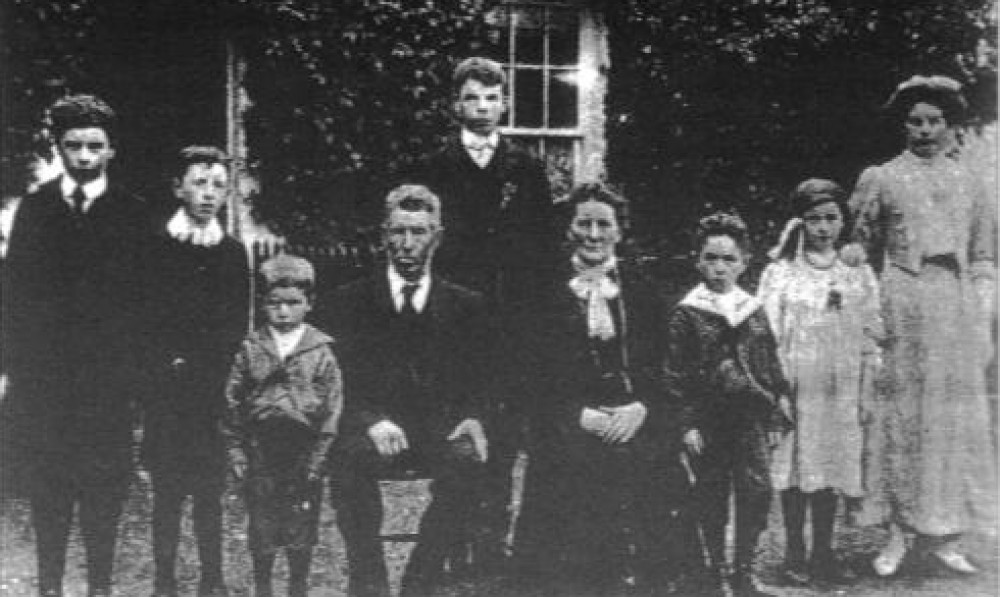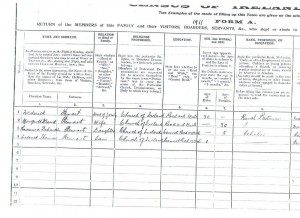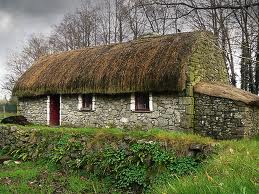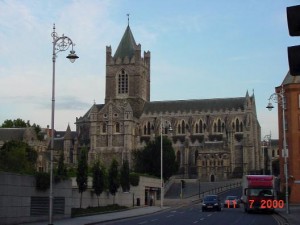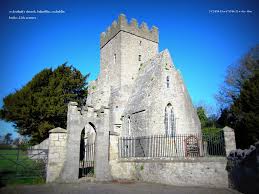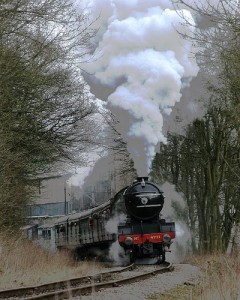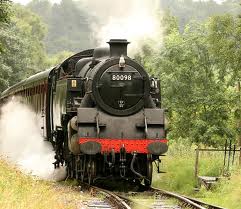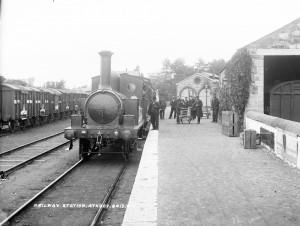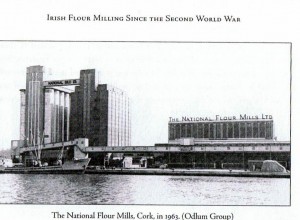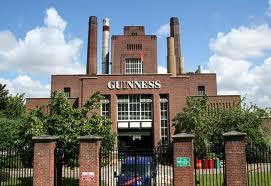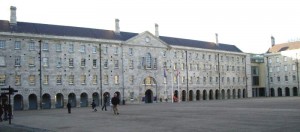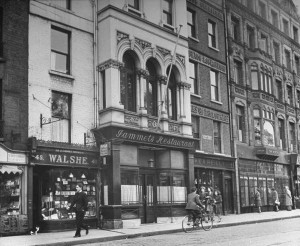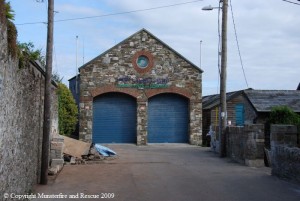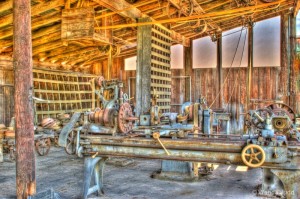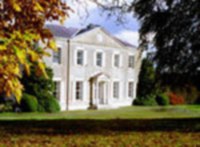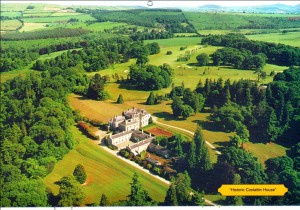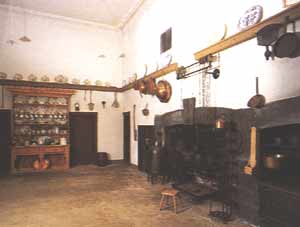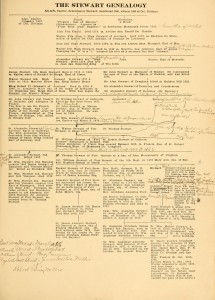DO YOU WANT TO KNOW ABOUT YOUR OWN FAMILY?
Genealogy, like charity in the old adage, begins at home. Your first port of call for your family history is your family members themselves, particularly the older members.
No research can replace hearing first-hand accounts from the people whose shared history you are trying to trace. There’s a good chance that they will know the names of relatives whom it would otherwise take months to find by searching alone, as well as stories and legends that you won’t find in any record-set. Discovering whether such tales are accurate is one of the joys of building your family tree.
If your relatives are comfortable with it, it is advisable to record your conversations, or make notes, if they prefer. Not only does this remind you of your source once your family tree begins to grow, but it is also a document of your personal history for future generations. Remember that investigating your family’s past in fine detail may cause you to uncover some unpleasant surprises, as well as all the fascinating finds and new relatives you will uncover.
Below is a list of questions you may wish to start with when asking about a specific ancestor. Of course this is only a guide and you may have other, more specific, queries that you would like answered.
If you wish to trace your family origins then you need to ask the following questions?
* What was their full name? Did they have a middle name or nickname that they preferred?
* When did they die? What was the cause of their death? Where were they buried?
* Were they married? If so, what was the name of their spouse? When and where did their spouse die?
* When did they marry? Where did the marriage occur? Was this the only marriage for both parties?
* Where did they live?
* Did they have children? If so, what were their children’s names?
* Did their children marry and where did or do they live? If they are deceased where and when did they die?
* What was their occupation? Where did they work? Did they serve in the military?
* Where and when were they born?
* What school or schools did they attend? Did they attend university?
* Were they a member of a religious community, or parish? Which religious denomination were they?
* Do you have any documentation of their life, such as birth, marriage or death certificates, their Will or other written records?
* Do you have any photographs or newspaper clippings of them? Do you know anything about their physical appearance or accent?
* Would any other relatives have further information, memories, or records relating to them?
Starting at home doesn’t simply mean speaking to those closest to you, but also examining the contents of your home itself. Often there will be old photographs, videos, letters and other heirlooms to discuss and investigate. If you’re fortunate, there may also be birth, marriage and death certificates for family members, which will save you time spent searching and the cost of ordering copy certificates.
Records
Birth Certificates: providing that they have been registered, similar to the one shown here.
Census Returns for 1901 and 1911: which lists the names, ages, occupations and religion of all persons who were in the house on the night of the census. This would include visitors and servants, similar to the one shown here.
Registry of Deeds: to see if the family had a Will, Memorials or any other legal document registered in their name.
Copies of such wills can be provided.
Griffiths Valuations for 1840’s which lists the name of the head of Household who either owned or rented land or property
Tithe Applotment Books for 1820’s which lists the name of the Head of Household paying tithes to the Anglican Church in Ireland, (The Established Church of that time).
Homesteads: photographs of homesteads if they still exist, similar to the the ones shown here..
Schools: photographs of the school which your ancestors attended if it still in existence such as the two schools shown below.
Churches,
photographs of the Church or Chapel which your ancestors attended.
Graves,
photographs of the family graves, if the graves have headstones on them.
Place of work.
Did your ancestors work on an estate, on on the railway. Iron factory, Brewery, Hotel or restaurant or the coast guard or were they in the military.
Photographs of the landed estates if they worked as tenant farmers and I can also search estate records to see if the family name is recorded.
Coollattin House on the former Coollattin Estate in Co. Wicklow.
Your Family Tree. I can provide you with a detailed family tree similar to the one shown below.
RESEARCHING YOUR FAMILY WHO EMIGRATED TO AMERICA – CANADA
How did they get there?
Passenger Lists: 7 periods of revision where various questions were asked, with some being added and some being deleted.
Customs/Passenger List 1821-1882
- Ship Name / Ship Master / Port of Embarkation.
- Port of Arrival / Date of Arrival.
- Name.
- Age (Years/Months).
- Sex.
- Occupation.
- The country to which they severally belong.
- The country to which they intend to become inhabitants.
- Died on the Voyage.
Customs/Passenger List 1883-1897
- Ship Name / Ship Master / Manifest Number.
- Date of Embarkation / Date of Arrival.
- Name.
- Age (Years/Months).
- Sex.
- Calling or Occupation.
- Native Country.
- Intended Destination (State or Country).
- Location of compartment or space occupied (forward, amidships or aft).
- Number of pieces of baggage.
- Transient (in transit or intending protracted sojourn).
- Port of Embarkation.
- Date and cause of Death.
- Able to read and write.
Customs/Passenger List 1897-1903
- Ship Name / Date of Embarkation / Port of Embarkation.
- Date of Arrival / Volume / Group / source.
- Name.
- Age (Years/Months).
- Sex.
- Married or single.
- Calling or Occupation.
- Able to read and write..
- Nationality.
- Last Residence.
- Seaport of Destination in US.
- Final Destination (state town or city).
- Whether having a ticket.
- By whom was passage paid?
- Having $30. If not, how much?
- Ever been in US? If so name and address of relative.
- Going to join a relative? If so, name and address of relative.
- Ever been in prison, alm house or supported by charity? Which?
- Polygamist?
- Contract Laborer?
- Condition of health? Mental and physical?
- Deformed or crippled? Nature and cause?
- Color.
- Native (Country / Province).
- Mother tongue (Language or dialect).
- Subject of what country?
- Religion.
Customs/Passenger List1903-1907
- Ship Name / Ship Master / Port of Embarkation.
- Date of Arrival / Volume / Group / Source.
- Name.
- Age (Years/Months.)
- Sex.
- Married or single.
- Calling or Occupation.
- Able to read and write.
- Nationality (country of last permanent residence).
- Race or people.
- Last residence (province, city or town).
- Final destination (state, city or town).
- Whether having a ticket?
- By whom was passage paid?
- Whether in possession of $50, If not, how much?
- Ever in US? If so , where and when?
- Going to join relatives? If so, name and address of relative.
- Ever been in prison, alms house or supported by charity? Which?
- Polygamist?
- Anarchist?
- Contract Laborer?
- Condition of health? Mental and physical?
- Deformed or crippled? Nature and cause?
- Height (Feet, Inches).
- Personal description, Complexion, Color of hair & eyes.
- Marks of Identification.
- Place of Birth.
Customs/Passenger List 1907-1913
- Ship Name / Ship Master / Port of Embarkation.
- Date of Arrival / Volume / Group / Source.
- Name (Family Name, Given Name).
- Age (Years/Months).
- Sex.
- Calling or Occupation.
- Able to read and write.
- Nationality (country of which citizen or subject).
- Race or people.
- Last permanent residence (country, city or town).
- Name and address of nearest relative or friend in country whence alien came.
- Final destination (state, city or town).
- Customs/Passenger List 1913-1917
- Ship Name / Date of Embarkation / Port of Embarkation.
- Date of Arrival / Volume / Group / Source.
- Name (Family Name, Given Name).
- Age (Years/Months).
- Sex.
- Married or single.
- Calling or Occupation.
- Able to read and write.
- Nationality (country of which citizen or subject).
- Race or people.
- Last permanent residence (country, city or town).
- Name and address of nearest relative or friend in country whence alien came.
- Final destination (state, city or town).
- Whether having a ticket.
- By whom was passage paid.
- Whether in possession of $50, If not, how much?
- Ever in US? Yes No – If yes, Years / Where.
- Ever been in prison, alms house ?
- Polygamist?
- Anarchist?
- Contract Laborer?
- Condition of health?
- Deformed or crippled?
- Height (Feet, Inches).
- Complexion.
- Color of hair & eyes.
- Marks of Identification..
- Place of Birth Country, city or town).
Customs/Passenger List 1917-1942
- Ship Name / Date of Embarkation / Port of Embarkation.
- Date of Arrival / Volume / Group / Source.
- Head Tax Status.
- Name (Family Name, Given Name).
- Age (Years/Months).
- Sex.
- Married or single..
- Calling or Occupation
- Able to read / language / write.
- Nationality (country of which citizen or subject).
- Race or people.
- Last permanent residence (country, city or town).
- Name and address of nearest relative or friend in country whence alien came.
- Final destination (state, city or town).
- Whether having a ticket.
- By whom was passage paid.
- Whether in possession of $50, If not, how much?
- Ever in US? Yes No – If yes, Years / Where.
- Going to join a relative? If so, name and address of relative.
- Purpose of coming to United States.
- Whether the alien intends to return to country whence he came after engaging temporarily in laboring pursuits in the US.
- Length of time alien intends to stay in the US.
- Ever been in prison, alms house ?
- Polygamist ?
- Whether a person who believes in or advocates the overthrow by force or violence of the government of the US or all forms of law, etc.
- Anarchist?
- Contract Laborer?
- Whether the alien has been previously deported within one year.
- Health condition ?
- Deformed or crippled?
- Height (Feet, Inches).
- Complexion.
- Color of hair & eyes.
- Marks of Identification.
- Place of Birth Country, city or town).
Other points of entry
- 1830 to 1855: pre Castle Garden.
- 1855 to 1890: Castle Garden.
- 1892 to 1912: Ellis Island.
Other Ports
- Baltimore 1820-1948
- Galveston 1893-1948
- New Orleans 1820-1945
- Philadelphia 1800-1945
- San Francisco 1893-1957
- Canadian 1865-1935
- Canadian Border Crossings 1895-1956
Boston Passenger Lists: Two distinct Passenger Arrival Lists for the Port of Boston.
- US Custom List .
- Available from Federal Archives and ancestry.com
- Gap from 1855 thru 1856 and April 1874 thru December 1882.
State of Massachusetts:
- 1848-1954.
- These lists are complete for that time period.
- Alphabetical Card Index for this collection that has been microfilmed by GSU.
- Actual Passenger Lists have also been microfilmed by GSU but is only available on Microfilm at the Massachusetts State Archives.
- The Massachusetts State Archives has a volunteer program where volunteers are entering the index to the Passenger Lists for the Port of Boston into a database which is online at www.sec.state.ma.uys/arc.
- Approximately 675,000 names are online. It’s important to actually look at the original lists as sometimes there are stories written down that can help you to identify your ancestors.
Naturalizations
- Important source of information.
- Nation of origin.
- Foreign or “Americanized” names.
- Residence.
- Date of arrival.
- May include birth dates, place and other immigration information about the immigrant and members of his family.
- Immigrants have never been required to apply for citizenship.
- May have started the process but never finished it – If a declaration was filed, that can also be obtained (usually more information than the actual naturalization paper).
- Before 1906 not likely to give town or origin or names of parents.
- Post 1906 records more detailed.
Clues about naturalization can be obtained from:
- Court Minutes.
- Homestead Records.
- Letter of Intent.
- Military Papers.
- Passports.
- US Census Records.
- Voting Registers.
Types of Citizenships
Collective Naturalization:
- Entire groups collectively granted U.S. citizenship.
- Individual naturalization papers do not exist.
Examples:
- Residents of the Louisiana Purchas in 1803.
- Texas in 1845.
- Hawaii in 1898..
- Blacks in 1868
- American Indians in 1924.
DD:
- Type of naturalization used for land purposes. You could buy and sell land, but you could not hold public office.
Derivative Citizenship:
- Citizenship granted to individuals based on military service or family relationship.
- A declaration of intention was not usually required in advance.
- The individual was usually naturalized at the time he filled an application or petition.
Types of derivative citizenships were:
- Children under 21 years of age (until 1940) and wives of citizens (until 1922) automatically became citizens when their father or husband became a citizen.
- Until 1906 immigrants under the age of 21 (whose parents did not naturalize) could be naturalized without filling out a declaration of intent after they reached the age of 21 and had met the residency requirements.
- Since 1862, non-citizens who have served in the U.S. military did not need to file a declaration of intention. – Could petition for naturalization after one year’s residency and honorable discharge from the military. – Since World War 1, citizenship, could be granted while an individual served in the military.
- From 1855 to 1922 a woman took the citizenship of her husband.
- From 1907 to 1922 a woman born in the United States who married an alien lost her U.S. citizenship and became an alien.
- If you already have an idea where they lived in the US, you can use US Census records to trace when and where they entered the US.
- You can also use census records to verify family groupings.
- 1790 – 1940 (1890 missing except for fragments).
- Every 10 years.
- 1900 key year for immigration questions:
- Started asking for year of emigration.
- Also indicated citizenship status (NA = Naturalized).
- Name variations
- Legends vs facts
- Age
- Primary vs secondary sources
- Transcription errors
- Information on passenger lists and census records varies over time
US CENSUS RECORDS
Caveats
Resources
Miller. Kerby A. Emigrants & Exiles: Ireland and the Irish Exodus to America. Explains why, when and where the Irish emigrated to America. 1988 Oxford Paperbacks.
Passenger Lists
General
- http://www.cyndislist.com/
- http://tiara.ie/
